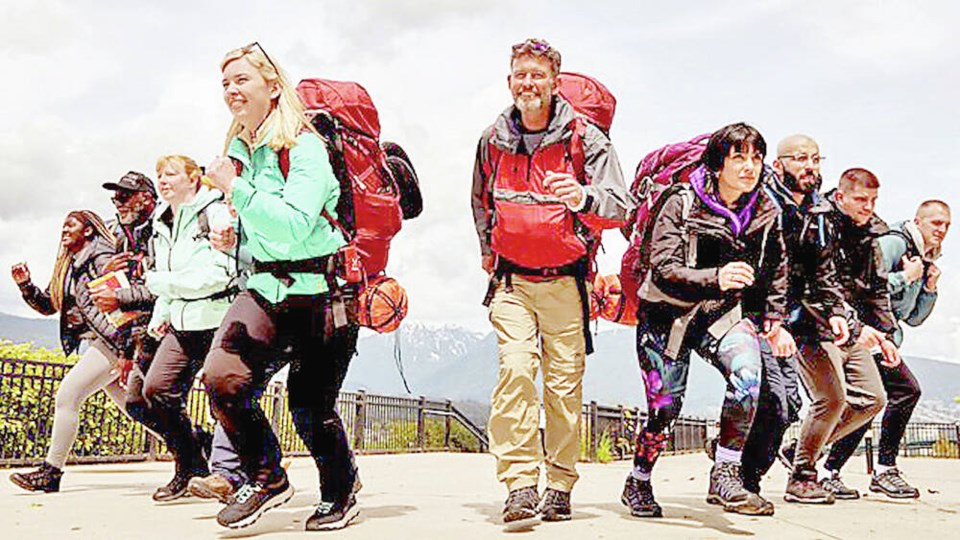Contestants on a British reality show discovered just how difficult it is to get around Vancouver Island without a car.
And it comes as no surprise to Port Hardy Mayor Patricia Corbett-Labatt, who said she’s impressed the contestants were able to get where they needed to go.
“Thank goodness that there’s people that drove them from Victoria to Port Hardy,” she said.
On a recent episode of BBC’s Race Across the World contestants were dropped in Vancouver and tasked with travelling to Haida Gwaii without flying or renting a car.
Accustomed to the extensive bus and rail networks of the more densely populated United Kingdom, the five teams are shocked by how limited transportation options are between cities and towns in B.C.
A couple of teams head to the Island, hoping to get to Port Hardy, where they can catch a ferry to Prince Rupert, and then travel on to Haida Gwaii.
In Campbell River — described by the narrator as “the last major outpost of civilization on the journey north” — a father-daughter team hears that they missed a bus to Port Hardy by 45 minutes and the next one is days away.
They ask if there’s somewhere else they can go by bus that has better connections to Port Hardy.
“There’s no bus connections,” the bus station employee tells the exasperated pair.
One team eventually manages to get a ride from someone all the way to Port Hardy.
Previous seasons of Race Across the World had contestants racing between continents, from London to Singapore and from Mexico City to the southern tip of Argentina. On season three, contestants have to travel from Vancouver to St. John’s, N.L., with detours well out of the way to reach checkpoints. Episode two has the teams heading north into the Yukon.
Even some viewers seem irritated by the challenge posed by B.C.’s limited transportation options, with one Twitter user writing: “I’m loving the scenic aspect of Canada, but not sure it really works for this kind of show. Too remote and not enough transport options to make it exciting.”
Corbett-Labatt said while it is possible to reach Port Hardy by bus, it’s difficult to piece a trip together from tip to tip on the Island, and would take multiple days, because it involves different companies and schedules that don’t line up well.
A bus from Campbell River to Port Hardy only runs twice a week, she said.
And it’s not cheap. A seat in a Waivin Flags Taxi shuttle between Campbell River and Port Hardy costs $100 for a roughly three-hour ride.
Teams on the show are given funds equivalent to the price of a one-way ticket to their final destination, which they can use to travel by land or sea. They’re also allowed to work along the way to earn more.
Brian Grover, author of B.C. Car Free: Exploring Southwestern B.C. Without a Car, said transportation options have evaporated in the two decades since he wrote his guide.
Greyhound’s departure from the province in 2018 created gaps in intercity bus services on the Island and the mainland. Bus services took a further hit during the pandemic when people weren’t travelling, although some options are starting to return, said Grover, who lives in Port Alice without a vehicle.
“It just strikes me as so ironic. It should be getting better, not worse,” Grover said.
Even as transportation options decrease, Grover said he’s seeing more interest than ever in getting around without a car.
Grover relies on hitchhiking, rides from neighbours and ride-sharing websites that help connect drivers with people looking for a lift.
Cost is a major barrier for many companies trying to make a go of providing bus services on the Island, said Grover, who wonders if more informal options could fill the transportation gaps.
“When Canadians think about public transportation, we always think of this five-star service like TransLink in Vancouver. Why can’t it be in the back of someone’s [Volkswagen] bus? As long as there’s seatbelts and the thing has been inspected, why couldn’t it be?”
Grover also suggested Islanders embrace ride-sharing groups. “Why not make 100 bucks on your trip back to Victoria from the North Island?”
>>> To comment on this article, write a letter to the editor: [email protected]



